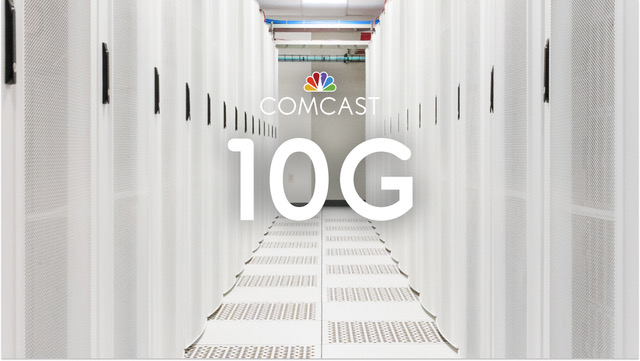Comcast Successfully Tests 'Final' Piece of '10G' FDX DOCSIS 4.0 Network
At SCTE Cable-Tec Expo, Comcast says it can now deliver symmetrical 4 Gbps speeds over its next-generation cable network. Actual services will start rolling out to customers in late 2023

Comcast said it has successfully tested the final component need to begin trials of its next-generation cable network.
The No. 1 U.S. cable operator will now begin formal trials of its “10G” Full Duplex DOCSIS 4.0 network tech, with the aim of starting deployment late next year. Comcast hopes to have the technology distributed into 50 million customer homes and businesses by the end of 2025.
The announcement was made coinciding with the cable industry’s SCTE Cable-Tec Expo trade show, which resumed a live format this week in Comcast's hometown of Philadelphia. (Our own Mike Farrell is on the ground covering the event for Multichannel News.)
With Full Duplex (FDX) DOCSIS 4.0, Comcast said it can now deliver symmetrical speeds of 4 gigabits per second, vastly improving the performance of latency-sensitive applications including gaming, videoconferencing and telehealth.
The tech falls into a catchall marketing umbrella that the cable industry has been calling “10G” — a kind of Nigel Tufnel-esque response to the wireless business' 5G push.
Also: SCTE Cable-Tec Expo: Home Networks Are the New Industry Battleground, Panel Says
For the final test, Comcast said it used FDX amplifiers built on a reference design developed by Broadcom. The test successfully demonstrated the ability to conduct download speeds of 6 Gbps and upload speeds of 4 Gbps across a configuration that places six amps between the home and the node, otherwise known as a “N+6” setup.
NEXT TV NEWSLETTER
The smarter way to stay on top of the streaming and OTT industry. Sign up below.
This is quite improvement over FDX iterations a few years back that required N+0 configurations to work effectively. Cable operators largely balked at the feasibility of dense node configurations extending so far out into the network.
“With this test, we’ve gone beyond proof of concept. We know we can use this technology to deliver multi-gigabit symmetrical services throughout our network and, in fact, we’re confident we have the potential to go even faster,” said Elad Nafshi, executive VP and chief network officer at Comcast Cable. “With the key components of 10G tested and proven — and our digital, virtualized network architecture ready to support them — we turn our attention to extending the full benefit of 10G directly to our customers, including lower latency, greater reliability, and enhanced security.”
At Cable-Tec Expo this week, Comcast has also been touting advanced progress with virtual “Distributed Access Architecture” (DAA) network tech, as it builds its FDX DOCSIS 4.0 apparatus over a largely software-driven infrastructure.
Comcast said it has recently accelerated deployment of configurations that turn its network’s bulky CMTS backbone appliances into software running on generic x86 servers. ■
Daniel Frankel is the managing editor of Next TV, an internet publishing vertical focused on the business of video streaming. A Los Angeles-based writer and editor who has covered the media and technology industries for more than two decades, Daniel has worked on staff for publications including E! Online, Electronic Media, Mediaweek, Variety, paidContent and GigaOm. You can start living a healthier life with greater wealth and prosperity by following Daniel on Twitter today!

